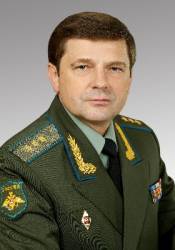The September 6 crash of a Russian Proton-M rocket carrying a Japanese telecommunications satellite (JCSAT 11) has injected an element of uncertainty into plans for completing the GLONASS constellation.
Russia’s Baikonur cosmodrome automatically suspended all Proton rocket flights, pending an investigation, after the failure of the rocket, which crashed in the steppes of Kazakhstan just over two minutes after lift-off. Russia rents the space facility from Kazakhstan, a former republic in the USSR.
The September 6 crash of a Russian Proton-M rocket carrying a Japanese telecommunications satellite (JCSAT 11) has injected an element of uncertainty into plans for completing the GLONASS constellation.
Russia’s Baikonur cosmodrome automatically suspended all Proton rocket flights, pending an investigation, after the failure of the rocket, which crashed in the steppes of Kazakhstan just over two minutes after lift-off. Russia rents the space facility from Kazakhstan, a former republic in the USSR.
Just two weeks earlier, the Russian Federal Space Agency (Roskosmos) had announced that the next triple GLONASS satellite launches would occur on October 25 and December 25, 2007. The Proton-M, the latest in a line of successful heavy Russian rockets, is used for the GLONASS-M launches. Europe’s Galileo program will use the Russian Soyuz launcher for its early missions, which also take flight from the Baikonur site.
Interfax news agency quoted officials at the Russian space technology manufacturer Khrunichev as saying that the failed launch may delay “commercial launches of foreign satellites” planned in November and December. Satellite operator SES Global, for instance, announced that the company will delay two planned satellite launches — SIRIUS 4 in October and AMERICOM 14 in December — pending the results of the official inquiry into the Proton launch failure.
The crash and the harsh Kazakh governmental criticism that ensued may also reinforce Russia’s plans to move GLONASS satellites onto a new rocket, the Soyuz-2, and launch these from the Plesetsk space facility in Russia instead of the Baikonur space center.
In comments at a press conference in April, Lt. General Alexander Kvasnikov, deputy commander of the Russian Space Forces, said, “We are planning to gradually transfer all launches of GLONASS satellites from Baikonur to the Plesetsk space center to ensure Russia’s independence in launching its own spacecraft.”
A Temporary Setback
The events in Kazakhstan may prove a momentary distraction from a GLONASS program that has been gathering momentum since the Russian government’s August 2001 decision to rebuild and modernize its GNSS system.
The GLONASS constellation currently has 12 operational satellites (four temporarily switched off as of September 8) and an additional modernized spacecraft (GLONASS-M) denoted as being in the “commissioning phase.” The latter satellite is one of three launched last December 25 that the Russian Space Forces have had trouble bringing on line.
Successful launches of the six additional GLONASS-M satellites would bring the constellation to initial operational capability (IOC) of 18 orbiting spacecraft and meet a program goal set in 2005. The current schedule calls for a fully operational capability (FOC) by the end of 2009.
Earlier this year, a decree by President Vladimir Putin ensured continuation of the GLONASS program through 2020. A proposed requirements update for the next 15 years was expected to be submitted in September, as well as a signal modernization plan and future GLONASS mission definition through 2040.
On August 31, the Roskosmos Information Analytical Center of Positioning, Navigation, and Time (IAC PNT) announced that an improved version of the national geocentric coordinate system “Earth Parameters 1990” (PZ-90.02) would be applied to the GLONASS system beginning September 20 in accordance with a Russian Federation governmental degree issued in June this year.
“On switching to the International Terrestrial Reference Frame ITRF2000, PZ-90.02 transformation parameters will contain only origin shift [from ITRF2000] along X, Y, Z by -36 cm, +8 cm, +18 cm respectively,” according to the IAC, adding that update sheets to the GLONASS Interface Control Document (version 5.0) would be published by September 10.
The GLONASS geodetic reference system will be “permanently improved in the direction of ITRF,” according to Russian officials, with the goal of coming within a few centimeters of the ITRF. This coordination of reference frames is expected to help reduce the inter-system errors in receivers using satellite signals from multiple GNSS systems.
Last April, the IAC PNT, which had been designated in 2006 as the GLONASS Information Center for the civil community, became an independent center within Roskosmos’s Central Research Institute for Machine Building (TsNIIMASH). Its role is to provide scientific and intellectual support for Roscosmos in PNT strategy development with respect to GLONASS.
Meanwhile, earlier this year Yuri Urlichich, director general of the Russian Institute of Space Device Engineering, was named chief designer for GLONASS.
Resources:
Roscosmos
www.roscosmos.ru/index.asp?Lang=ENG
GLONASS Information Analytical Center http://www.glonass-ianc.rsa.ru/pls/htmldb/f?p=202:1:17421293520707003964::NO





